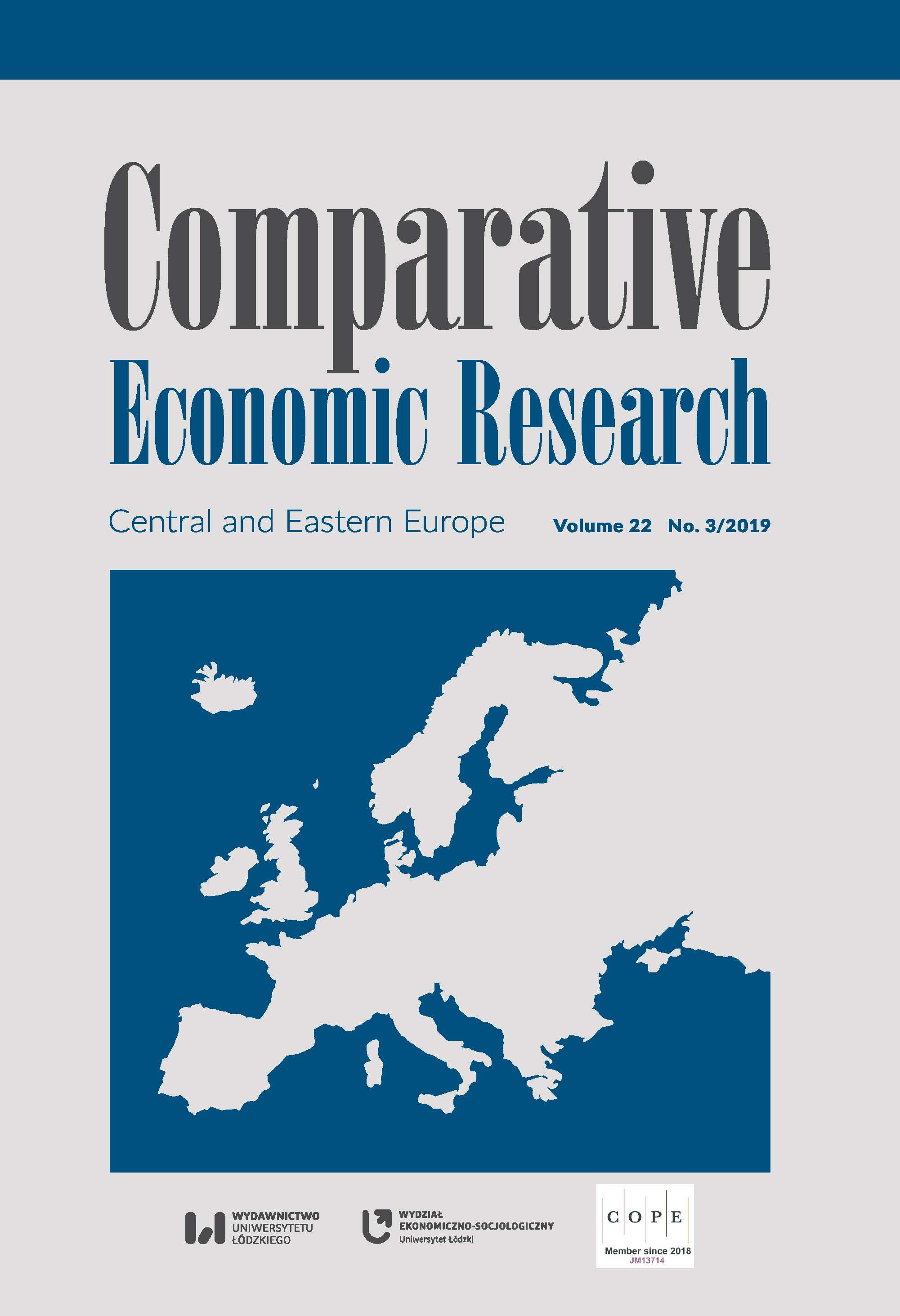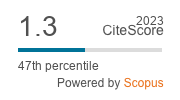Regulations for Returning Labour Migrants to Ukraine: International Background and National Limitations
DOI:
https://doi.org/10.2478/cer-2019-0022Keywords:
citizenship, crisis, labour force, labour migration, migrant flows, migrant reintegration policy, social and economic policyAbstract
The current situation on the Ukrainian labour market is not only characterised by a high rate of unemployment, but also by low‑wage jobs with relatively severe requirements from potential employers. The intensive labour migration from Ukraine is forced by factors such as lower standards of living when compared to the standards in neighbouring countries, the flexibility of changing the place of living and working, and the military crisis in the eastern parts of Ukraine, among others. The article is devoted to the policy on the return of labour migrants to Ukraine. The issues of the increasing number of asylum seekers arriving from Ukraine to other European countries from 2008 to 2017, and the analysis of the main migration trends and legal norms relevant to the migration issues have revealed the mismatch in directions of labour migration flows from Ukraine and boundary crossings by other migrants. By means of analysing the interaction between the rate of human development and the efficiency of migrant integration policies, the authors have proposed several strategic tools to ease the return of the labour force to Ukraine, including the cessation of military actions, raising the level of economic progress, fighting corruption, expanding opportunities for small and medium‑sized businesses, and solving environmental problems.
Downloads
References
Abbott, P., Sapsford, R. (2006), Life‑Satisfaction in Post‑Soviet Russia and Ukraine, “Journal of Happiness Studies”, Vol. 7, Issue 2, pp. 251–287.
Google Scholar
About External Labour Migration: The Law of Ukraine (5.11.2015 № 761‑VIII). URL: http://zakon5.rada.gov.ua (accessed: 17.11.2018).
Google Scholar
Adams, R. (2011), Evaluating the economic impact of international remittances on developing countries using household surveys: a literature review, “Journal of Development Studies”, Vol. 47, pp. 809–828.
Google Scholar
Asylum statistics. URL: http://ec.europa.eu/eurostat/statistics‑explained (accessed: 17.11.2018).
Google Scholar
Beine, M., Docquier, F., Schiff, M. (2013), International migration, transfer of norms, and home country fertility, “Canadian Journal of Economics”, Vol. 46 (4), pp. 1406–1430.
Google Scholar
Chauvet, L., Mercier, M. (2014), Do return migrants transfer political norms to their origin country? Evidence from Mali, “Journal of Comparative Economics”, Vol. 42 (3), pp. 630–651.
Google Scholar
Cortes, P. (2015), The feminization of international migration and its effects on the children left behind: evidence from the Philippines, “World Development”, Vol. 65, pp. 62–78.
Google Scholar
European Asylum Support Office. URL: https://www.easo.europa.eu (accessed: 17.11.2018).
Google Scholar
European Commission Welcomed the Implementation of Ukraine Action Plan on Visa‑Free Regime. URL: https://112.international/ukraine‑and‑eu (accessed: 17.11.2018).
Google Scholar
Eurostat. URL: http://appsso.eurostat.ec.europa.eu/nui/setupDownloads.do (accessed: 17.11.2018).
Google Scholar
Gibson, J., McKenzie, D., Stillman, S. (2011), The impacts of international migration on remaining household members: omnibus results from a migration lottery program, “Review of Economic Statistics”, Vol. 93, pp. 1297–1318.
Google Scholar
Human Development Report (2017). URL: http://hdr.undp.org/en (accessed: 23.10.2018).
Google Scholar
International Migration Report (2017). United Nations Department of Economic and Social Affairs / Population Division.
Google Scholar
International Organization for Migration. URL: http://iom.org.ua/sites/default/files (accessed: 17.11.2018).
Google Scholar
Ivlevs, A., King, R. (2017), Emigration, remittances, and corruption experience of those staying behind, “Public Choice”, Vol. 171 (3), pp. 389–408.
Google Scholar
Ivlevs, A., Nikolova, M., Graham, C. (2019), Emigration, remittances, and the subjective well‑being of those staying behind, “Journal of Population Economics”, Vol. 32, pp. 113–151.
Google Scholar
King, R. (2002), Towards a new map of European migration, “European Migration: Flows, Structures and Regulation”, Vol. 8, Issue 2, pp. 89–106.
Google Scholar
Koshulko, O. (2015), Gender equality in case of Ukrainian female migrants in Poland, “Proceedings of the 10th Women in Culture Conference “Gender, Culture & Migration 2015” (Gdansk, Poland, 6–7 March)”, organised by the Faculty of Social Sciences, University of Gdansk.
Google Scholar
Lapshyna, I. (2014), Corruption as a Driver of Migration Aspirations: the Case of Ukraine, “Economics and Sociology”, Vol. 7, Issue 4, pp. 113–127.
Google Scholar
Levitt, P. (1998), Social remittances: migration driven local‑level forms of cultural diffusion, “International Migration Review”, Vol. 32, pp. 926–948.
Google Scholar
Marekova, H., Balak, R., Ilavska, L., Malik, B., Szaniszlo, M., Inocent, Th., Kusin, V., Drabikova, J. (2015), Immigrants in the European Union, Backi Petrovac, Srbija, 154.
Google Scholar
Markowska‑Manista, U. (2016), The Interdisciplinary Contexts of Reintegration and Readaptation in the Era of Migration, Warsaw, 248.
Google Scholar
Massey, D., Arango, J., Hugo, G., Kouaouci, A. (1993). Theories of International Migration: A Review and Appraisal, “Population and Development Review”, Vol. 19 (3).
Google Scholar
Migrant Integration Policy Index (2015). URL: http://www.mipex.eu (accessed: 17.11.2018).
Google Scholar
Migration as a Factor of Development in Ukraine, Kyiv: IOM, 2016.
Google Scholar
Migration in Ukraine: facts and numbers, Kyiv: IOM, 2016.
Google Scholar
Migration Policy Institute (MPI). URL: www.migrationpolicy.org/programs (accessed: 17.11.2018).
Google Scholar
Nikolova, M., Graham, C. (2015), In transit: the well‑being of migrants from transition and post‑transition countries, “Journal of Economic Behaviour Organization”, Vol. 112, pp. 164–186.
Google Scholar
Nikolova, M., Roman, M., Zimmermann, K.F. (2017), Left behind but doing good? Civic engagement in two postsocialist countries, “Journal of Comparative Economics”, Vol. 45 (3), pp. 658–684.
Google Scholar
On the procedure for departure from Ukraine and entry into Ukraine of citizens of Ukraine: Law of Ukraine (January 21, 1994, № 3857‑XII). URL: http://zakon5.rada.gov.ua/laws/show/3857–12 (accessed: 17.11.2018).
Google Scholar
Piore, M.J. (1979), Birds of Passage: Migrant Labor and Industrial Societies, Cambridge, UK: Cambridge University Press.
Google Scholar
State Border Guard Service of Ukraine. URL: https://dpsu.gov.ua (accessed: 17.11.2018).
Google Scholar
The State Migration Strategy of Ukraine for the period up to 2025. URL: http://zakon2.rada.gov.ua (accessed: 17.11.2018).
Google Scholar
State Statistics Service of Ukraine. URL: http://ww.ukrstat.gov.ua (accessed: 17.11.2018).
Google Scholar
Trading Economics. URL: https://tradingeconomics.com/ukraine (accessed: 17.11.2018).
Google Scholar
Trends in Total Migrant Stock: The 2015 Revision, United Nations.
Google Scholar
Tyshchuk, T. (2018), A High Minimum Salary will Prove Individual Entrepreneurs, or Who has Become More Earned in Ukraine. URL: https://voxukraine.org/uk (accessed: 1.11.2018).
Google Scholar
Ukraine population, 2018. URL: http://www.worldometers.info/world‑population/ukraine‑population (accessed: 17.11.2018).
Google Scholar
United Nations Treaty Collection. URL: http://treaties.un.org (accessed: 17.11.2018).
Google Scholar
World Economic Outlook: Database‑October 2017, International Monetary Fund.
Google Scholar
Мінсоцпоітики: Понад 3,2 мільйона українців постійно працюють за кордоном.
Google Scholar
URL: https://economics.unian.ua/finance/10173092‑ponad–3–2‑milyona‑ukrajinciv‑postiyno‑pracyuyut‑za‑kordonom‑minsocpolitiki.html (accessed: 17.11.2018).
Google Scholar
Національний банк України. URL: https://bank.gov.ua/control/uk (accessed: 17.11.2018).
Google Scholar
Скільки українців хочуть виїхати за кордон: опитування. URL: http://kr24.com.ua/news/skilki‑ukrajintsiv‑hochut‑vijihati‑za‑kordon‑opituvannja (accessed: 17.11.2018).
Google Scholar
Downloads
Published
How to Cite
Issue
Section
License

This work is licensed under a Creative Commons Attribution-NonCommercial-NoDerivatives 4.0 International License.











